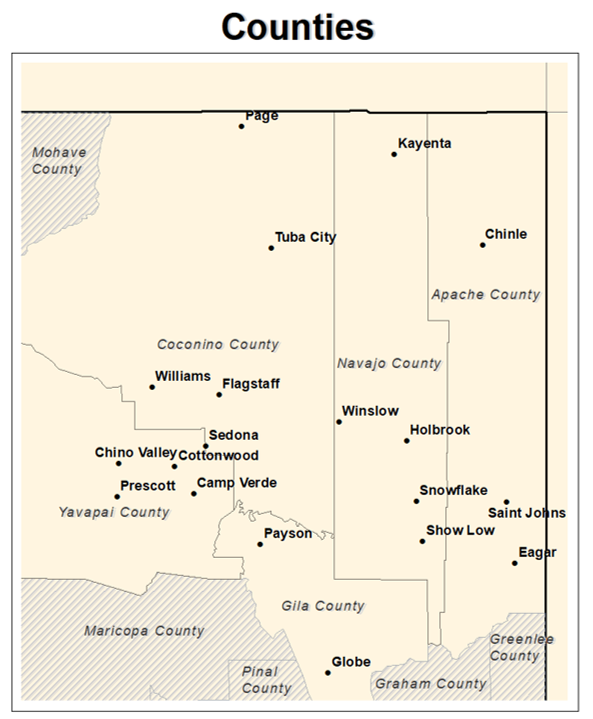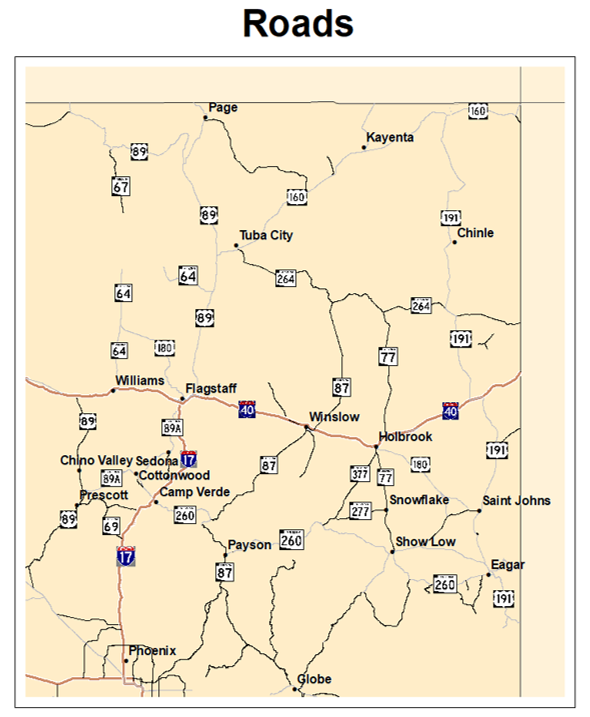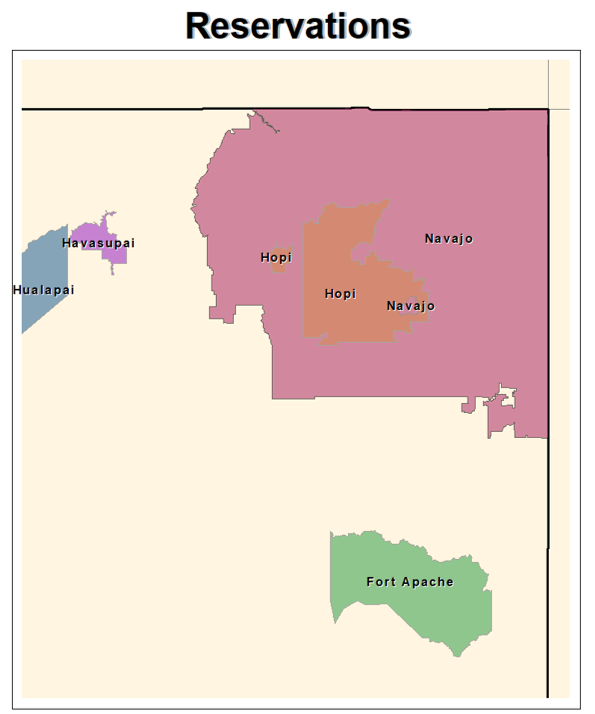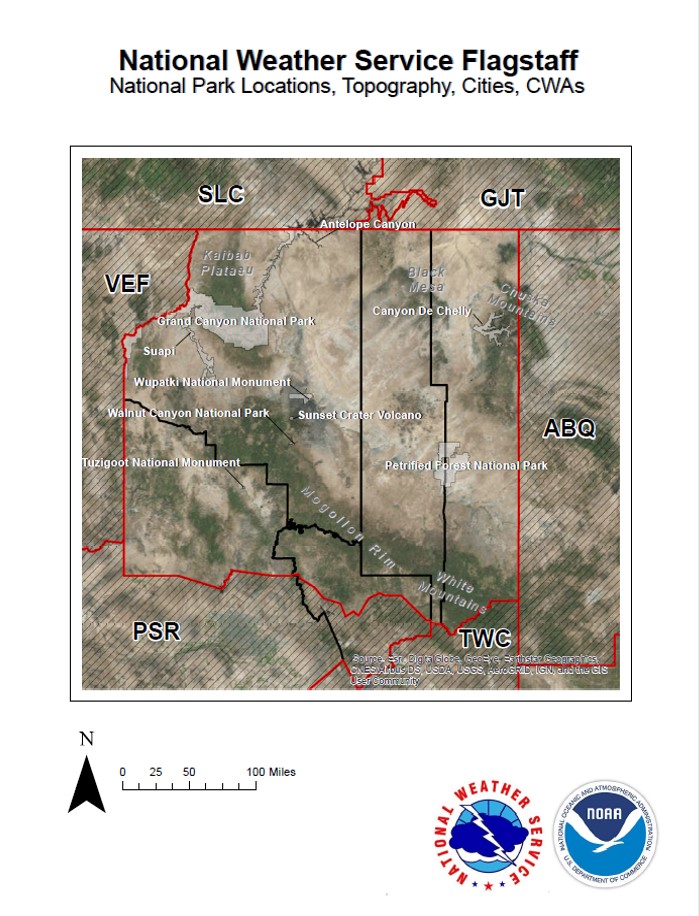
SKYWARN is a program that trains volunteers to help keep their local communities safe by providing timely and accurate reports of monsoon season weather to the National Weather Service. Read More >
The National Weather Service office in Flagstaff serves five counties across northern Arizona: Coconino, Yavapai, Navajo, Apache, and northern Gila counties. The highest point in our forecast area is Mt. Humphreys (the highest point in the state of Arizona) at 12,633 feet above sea level; the lowest point in the area is near the town of Black Canyon City (near 2,000 feet above sea level). Due to these elevation differences, the Flagstaff office provides forecasts for a wide variety of weather conditions including heavy snowfall, bitter cold, severe thunderstorms, heavy rainfall, excessive heat and strong winds. Our office is located at Camp Navajo (Arizona Army National Guard) in Bellemont, AZ (about 10 miles west of Flagstaff).
We are on duty around-the-clock; our operations run 24 hours a day, 7 days a week. Due to the importance of our mission, NWS employees are considered essential and will continue working during government shutdowns. We are always on-the-job, protecting the public from the ever-present threats of mother nature!
Intrested in touring the NWS Flagstaff office? Click here for more information
The office leader. Responsible for directing all office operations, staff, and administrative programs.
Outreach coordinator. Serves as the liaison between local and state government officials. Responsible for directing annual storm spotter training and is the primary contact for media inquiries and outreach events.
Training coordinator. Responsible for training the staff and keeping abreast of the latest meteorological/technological advances and oversees research activities taking place in the office.
Manages the office electronic staff and maintenance program. Oversees the maintenance of the Doppler radar, NOAA weather radio, and observing equipment.
Local IT expert. Performs software support for operations, while ensuring system stability and security. Also serves as the primary fire weather point of contact.
Maintains and enhances the Cooperative Observation Program which collects climate data throughout northern and central Arizona. May occasionally perform duties as a Meteorologist.
Performs office and staff administrative tasks, including payroll and budget/travel expenses.
Operational meteorologists and shift supervisors. Prepares various forecast products and is responsible for the quality and timeliness of all products and services produced by the office. Each has one or more specialized areas of expertise (focal points).
Operational meteorologists responsible for all routine and non-routine forecast products prepared and issued. Each has one or more specialized areas of expertise (focal points).
Perform routine and non-routine maintenance of all office electronic equipment. Maintain the Doppler radar, NOAA weather radio, and observing equipment.


Our neighboring tribal nations are keen observers of weather and we work closely with them when they are interested in NWS support. Examples include rain gauges, hosting portable weather stations, educational programs and products for schools and community members and tribe-specific graphics.

The National Weather Service Flagstaff is tasked with forecast and warning responsibilities within Apache, Coconino, Navajo and Yavapai counties; along with the northern half of Gila County. These geographic areas, about the size of the state of Ohio, provide a diverse set of forecast zones and climates.
To learn more about northern Arizona weather, visit our Science Corner page!
